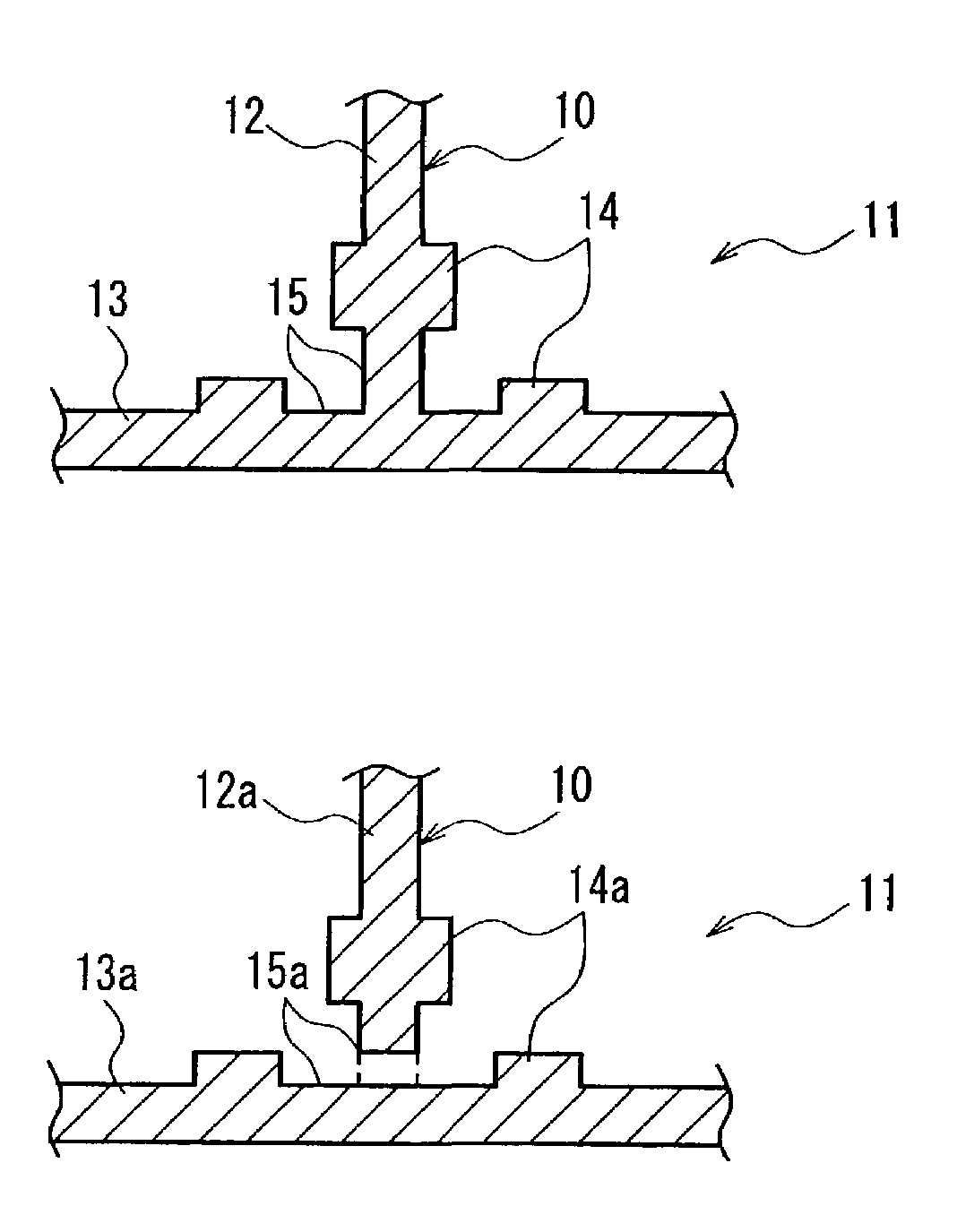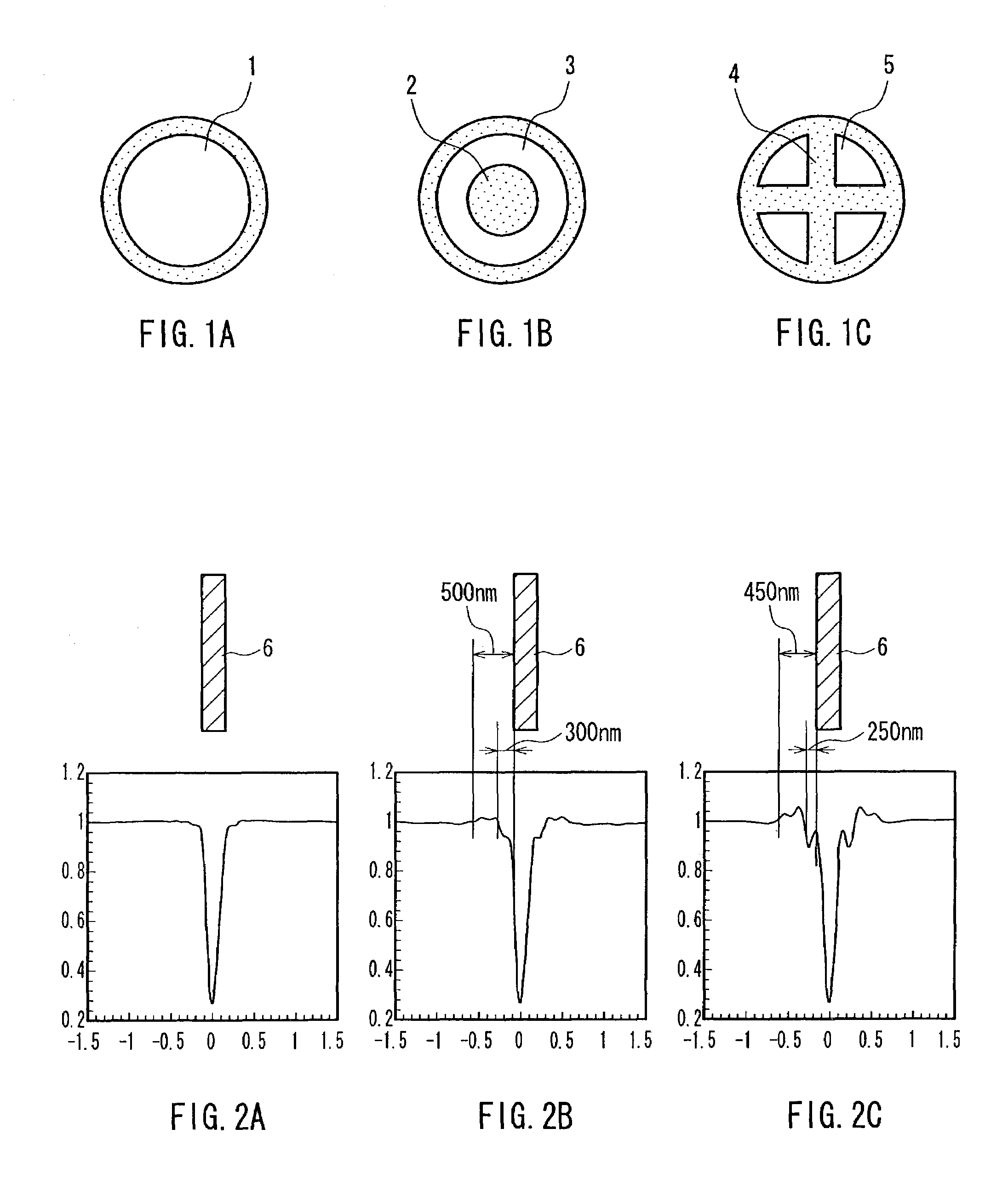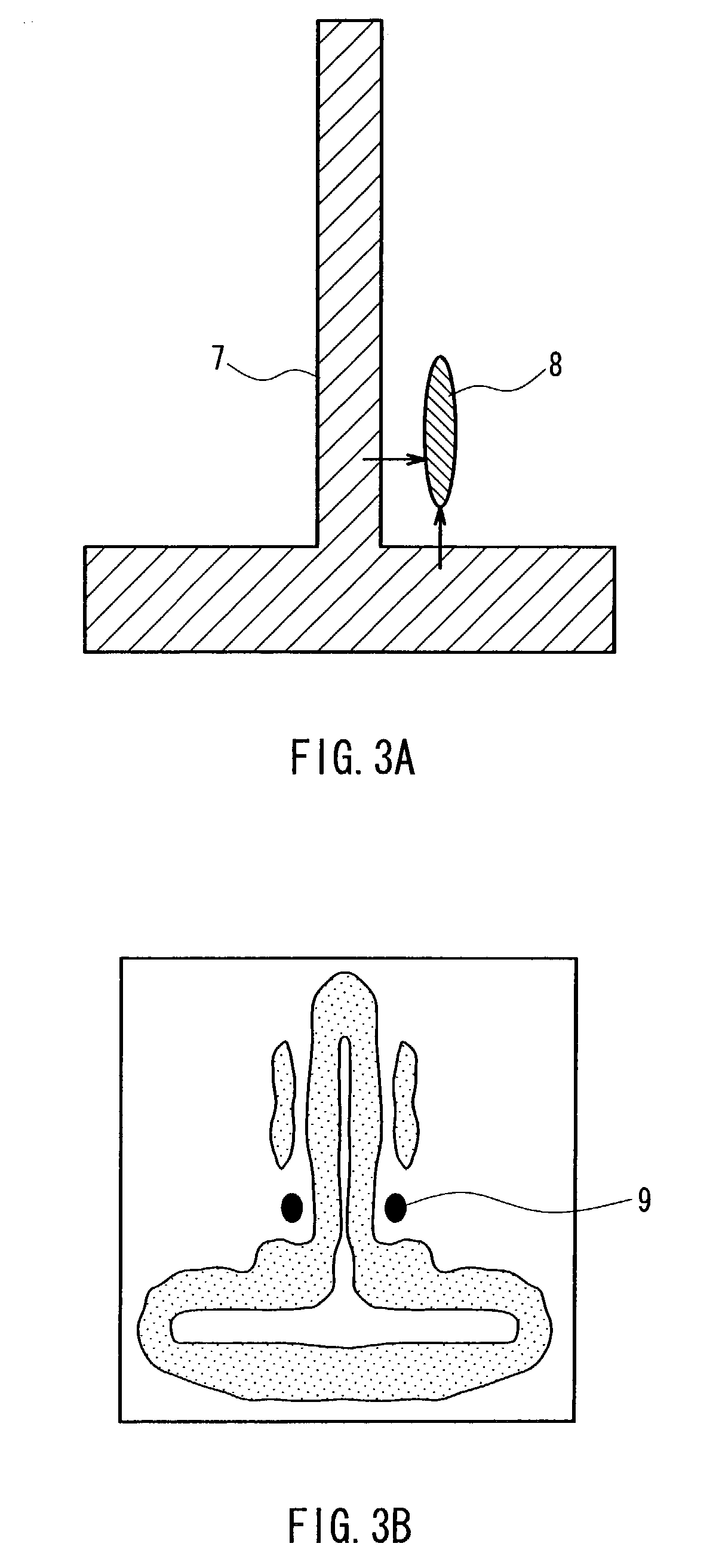Photomask and pattern forming method
- Summary
- Abstract
- Description
- Claims
- Application Information
AI Technical Summary
Benefits of technology
Problems solved by technology
Method used
Image
Examples
embodiment 1
[0035]Embodiment 1 will be described by referring to FIGS. 4A and 4B, FIGS. 5A and 5B, and FIG. 6. FIGS. 4A and 4B are plan views, each showing pattern data used for forming a mask of this embodiment. In the pattern data of FIGS. 4A and 4B, a diagonally shaded region 10 corresponds to a light-shielding portion for shielding off-axis illumination light, and a plain region 11 corresponds to a light-transmitting portion for transmitting the off-axis illumination light. FIGS. 5A and 5B are plan views showing resist patterns formed by the mask based on the pattern data in FIGS. 4A and 4B, respectively. FIG. 6 is a graph showing a portion of the contour of the resist pattern formed by ⅔ annular illumination.
[0036]The pattern data of FIG. 4A includes a junction at which line circuit patterns 12, 13 (line width: about 100 nm) are connected to each other with the circuit pattern 12 being orthogonal to the circuit pattern 13 so as to form a T-shape. A rectangular small pattern 14 having a wid...
embodiment 2
[0046]Embodiment 2 will be described by referring to FIG. 7. FIG. 7 is a graph showing a portion of the contour of a resist pattern formed by quadrupole illumination. In this embodiment, a mask including a 10 nm-wide small pattern was produced, and quadrupole illumination was used for exposure. The pattern etc. of the mask used are the same as those shown in FIGS. 4A, 4B, 5A, and 5B of Embodiment 1.
[0047]FIG. 7 shows the specific shape of a vertical line pattern in the vicinity of the junction of the resist pattern in comparison with conventional examples. The horizontal and vertical axes (nm) of this graph are the same as FIG. 6. A conventional example B1 shows a case using the same mask pattern and transfer conditions as those of this embodiment, except that no small pattern is formed. A conventional example B2 shows a case using a 10 nm-wide small pattern in the same manner as this embodiment, except that the small pattern is formed within the range between 0.4 and 0.75 λ / (NA·K) ...
PUM
 Login to View More
Login to View More Abstract
Description
Claims
Application Information
 Login to View More
Login to View More - R&D
- Intellectual Property
- Life Sciences
- Materials
- Tech Scout
- Unparalleled Data Quality
- Higher Quality Content
- 60% Fewer Hallucinations
Browse by: Latest US Patents, China's latest patents, Technical Efficacy Thesaurus, Application Domain, Technology Topic, Popular Technical Reports.
© 2025 PatSnap. All rights reserved.Legal|Privacy policy|Modern Slavery Act Transparency Statement|Sitemap|About US| Contact US: help@patsnap.com



